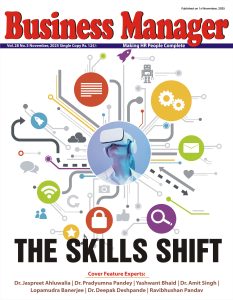The world of work is undergoing a quiet revolution in India. The traditional 9 to 5, full-time employment model is giving way to a flexible, multi-layered workforce – a blend of permanent employees, gig workers, freelancers, apprentices, contractual staff, and remote talent. For employers and HR leaders, this is both an opportunity and a challenge.
India’s demographic dividend and digital adoption have made flexibility the new currency of work. Start-ups thrive on gig models, global corporations experiment with hybrid work, and traditional industries increasingly rely on contract labour for seasonal demands. For workers too, flexibility often means autonomy, supplementary income, and the ability to balance multiple commitments. Yet, behind this dynamism lie deep management, regulatory, and ethical questions.
The first challenge is integration. A flexible workforce cannot be managed in silos. HR systems must evolve to create inclusive policies where permanent employees and gig contributors feel equally respected. Engagement models, recognition programs, and communication channels need to be redesigned so that no category of worker feels like a second-class citizen.
Also read – Body-shaming, leering gazesufficient basis for sexual harassment allegations against college principal
The second challenge is compliance. Labour codes are still in transition. Employers must stay alert to evolving laws on gig workers, social security, and contractual obligations. Misclassification of workers or neglecting statutory benefits can create reputational and legal risks. Few states have already came up with rules on gig workers welfare and social society.
Third, there is the issue of capability and culture. Managing flexibility requires a mindset shift from control to collaboration. Supervisors need training to lead distributed, temporary, or remote teams. Technology tools – from workforce management platforms to AI-driven scheduling – must be adopted, not as a surveillance mechanism, but as enablers of productivity and trust.
Finally, the larger question is fairness. Flexibility should not become a mask for exploitation. Workers at the margins – delivery agents, apprentices, or seasonal workforce must have access to safe working conditions, grievance redressal, and pathways for skill development. A flexible workforce is sustainable only if it is also equitable.
India stands at the cusp of defining its own model of workforce flexibility – one that balances efficiency with empathy, and agility with accountability. If managed thoughtfully, it could become a source of competitive advantage for businesses and a driver of inclusive growth for the nation.
The real test for business organisations is whether they can manage it with foresight, fairness, and innovation.
The current issue cover story is all about understanding the nuances of flexible workforce management and adopting a holistic approach to take it in fold and convert the opportunity into mutual advantage.
If you like it let us know. If not, well, let us know that too.
Happy Reading








